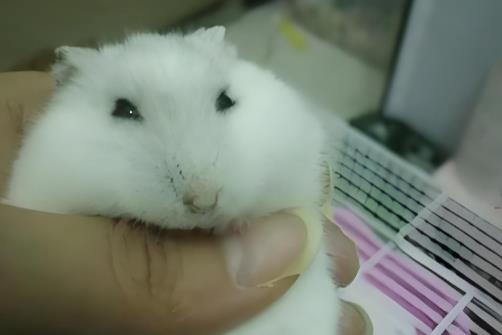Hamster self-mutilation that results in death may be caused by an unsuitable environment, health issues, psychological stress, or abnormal behavior. Prevention requires improving living conditions, timely disease treatment, relieving psychological stress, and isolation. Below are specific causes and preventive measures:

I. Possible Causes of Hamster Self-Mutilation Leading to Death
Unsuitable Environment
Cage design flaws: Some cages have design defects, such as overly small openings. When hamsters try to squeeze through these openings, they may get their teeth or bodies stuck, leading to suffocation or injury.
Cramped space: Hamsters are solitary animals and need enough room to move. Being confined to a small cage for a long time can cause stress buildup, triggering self-mutilating behavior.
Health Issues
Skin problems: Parasitic or fungal infections can make a hamster’s skin itchy, leading it to gnaw on its paws or other body parts.
Overgrown teeth: Hamsters’ teeth grow continuously. If they become too long, they may pierce the hamster’s flesh, causing pain and prompting self-mutilation.
Other diseases: Conditions like respiratory infections or diarrhea can also make hamsters feel unwell, which may lead to self-mutilation.
Psychological Stress
Loneliness: Although hamsters are solitary, they still need appropriate social interaction. Long-term lack of interaction can cause loneliness, which in turn triggers self-mutilation.
Anxiety: Environmental changes (e.g., moving the cage) or the introduction of new pets can make hamsters anxious. They may resort to self-mutilation to relieve stress.
Abnormal Behavior
Mating season behavior: During the mating season, hamsters may exhibit extremely hyperactive or aggressive behavior, which can sometimes lead to self-mutilation.
Imitative behavior: If there are multiple hamsters in one cage, the self-mutilating behavior of one hamster may be imitated by others.
II. Preventive Measures
Provide a Suitable Living Environment
Choose an appropriate cage: Ensure the cage is spacious enough and has a reasonable design, with no defects that could injure the hamster.
Keep the environment clean: Clean the cage regularly, replace bedding, and maintain a dry and hygienic environment.
Monitor the Hamster’s Health
Regular checks: Observe the hamster’s behavior, appetite, weight, and fur daily for changes. Identify health issues promptly.
Timely treatment: If you notice skin problems, overgrown teeth, or other diseases in the hamster, seek veterinary care immediately.
Relieve Psychological Stress
Offer toys and activity space: Place exercise wheels, tunnels, and other toys in the cage to increase the hamster’s activity level and relieve loneliness and anxiety.
Appropriate interaction: Spend time interacting with the hamster regularly (e.g., gentle petting or playtime) to strengthen your bond with it.
Prevent Abnormal Behavior
Isolation: If a hamster shows self-mutilating behavior, isolate it promptly to prevent other hamsters from imitating.
Seek professional help: If you cannot identify the cause of the self-mutilation or cannot handle the issue effectively, consult a veterinarian or an experienced hamster keeper.
